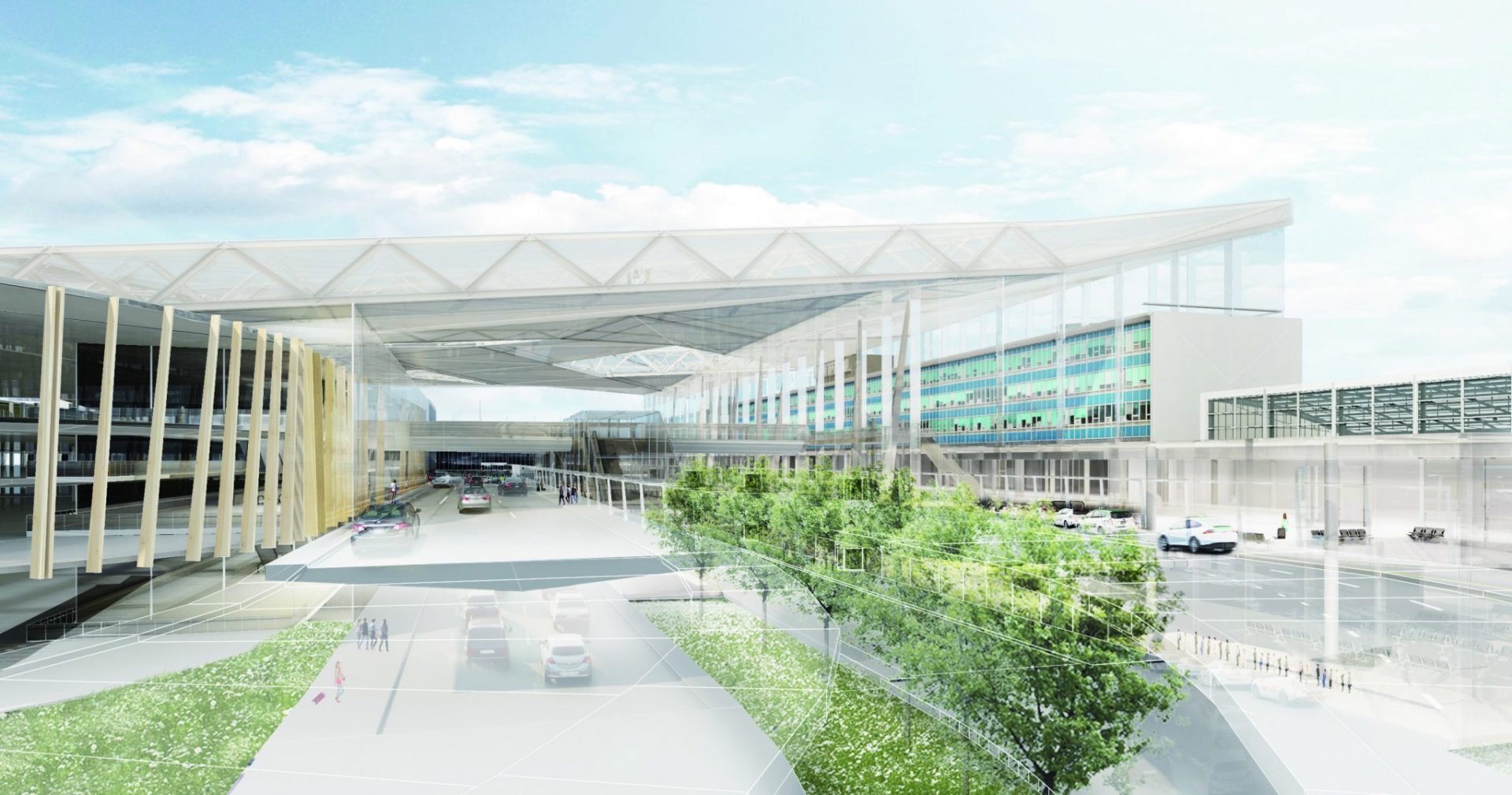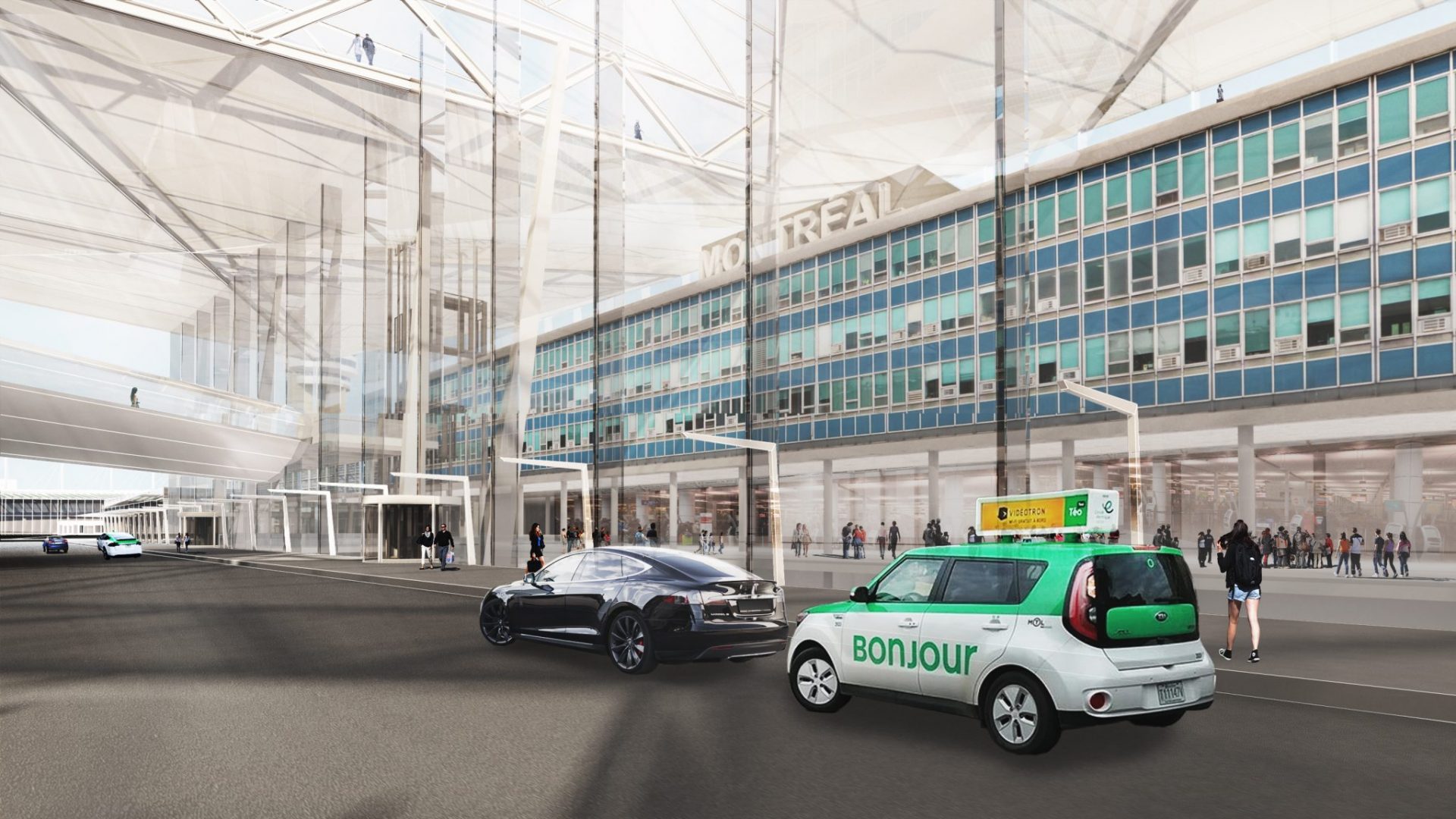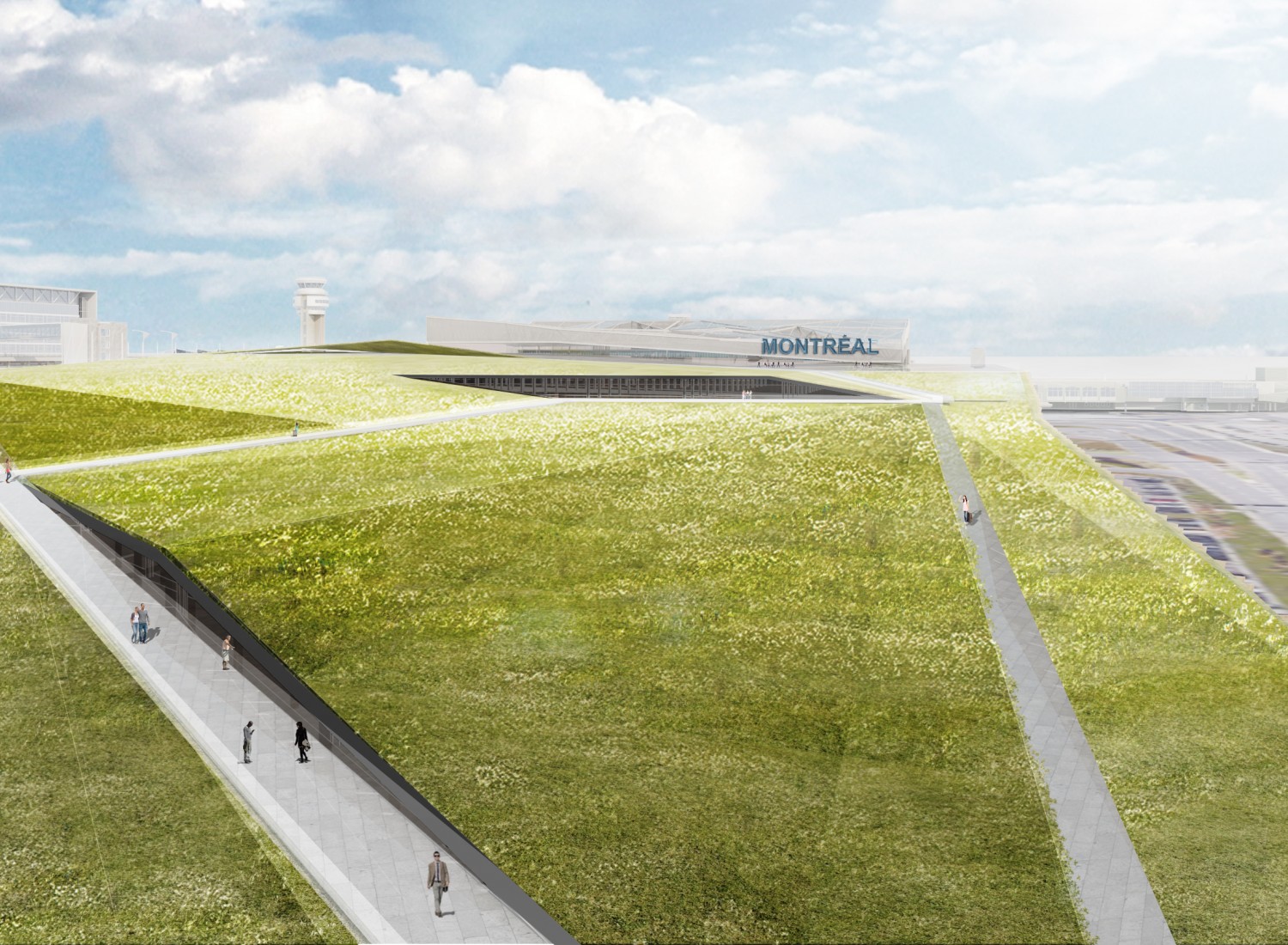- May 10, 2018
Concept introduces greenspace and transparency
The Lemay team has produced a brilliant new signature for Montréal-Trudeau International Airport.
The mandate from Aéroports de Montréal (ADM) was to propose themes for developing a new image for the airport and redefining this key city entrance. The objective was to define a signature that would leave a lasting impression on the traveler, a stamp attesting to their visit to Montreal.
The synergy of our transdisciplinary team and ADM decision-makers steered the project through the pre-concept stage and feasibility study: an opportunity to reflect even further on the architectural gesture that will redefine the traveler experience.
ADM is facing a major challenge with regard to growth in the number of travelers. Its traffic has soared by 32% in the last five years, bringing its number of visitors to almost 20 million annually. This situation places inordinate pressure on outdated facilities such as the drop-off zone and parkade, among others.
The architectural thematic study put forward by our airport, landscape architecture and urban design teams evokes movement and fluidity, easing the migration of its many visitors while reflecting the strong identities of Montreal and the Province of Quebec. The exceptional design of this proposal revolves around four points of interest: the Icon, the Cloud, the and the Edge of the forest.
Montréal-Trudeau’s original blue façade and its overhanging sign are at the heart of the airport’s iconic identity. This emblem in the Montreal cityscape forms the foundation for the first point of interest: the Icon. Protected by a glass building envelope, this central element of the new identity will overlook the concept’s components as they come together.
The second point of interest, the Cloud, is a glass roof, a translucent and transparent skin that will shelter the drop-off area for arrivals and departures, offering stunning views of the airspace from its observatory as it protects travelers from the weather.
The roof of the new parking area will be carpeted by the Topographical landscape, a vast vegetated infrastructure visible from the moment the traveler enters the airport zone, by land or by air. With fissures in strategic places to allow light to filter inside, this covering will act as a grand promenade offering views of the site’s various sectors as well as its surroundings. This third point of interest will greatly reduce the heat island effect and the need for snow removal. Viewed from the air, especially at the moment of landing, it will be a strong, urban statement.
Finally, the Edge of the forest, which refers to the border surrounding the parking area and pedestrian routes, will suggest the outskirts of an urban forest while directing the flow of traffic. The choice of materials such as glass and wood will allow users to enjoy a décor that will change with the rhythm of the seasons, reflecting the uniqueness of Quebec’s landscapes.
This thoughtful airport concept meets the challenges posed by current and future traffic increases. It validates the current traveler experience as it addresses the needs of future generations. A place of welcome, enchanting and accessible, it reflects today as much as it adapts to tomorrow.


